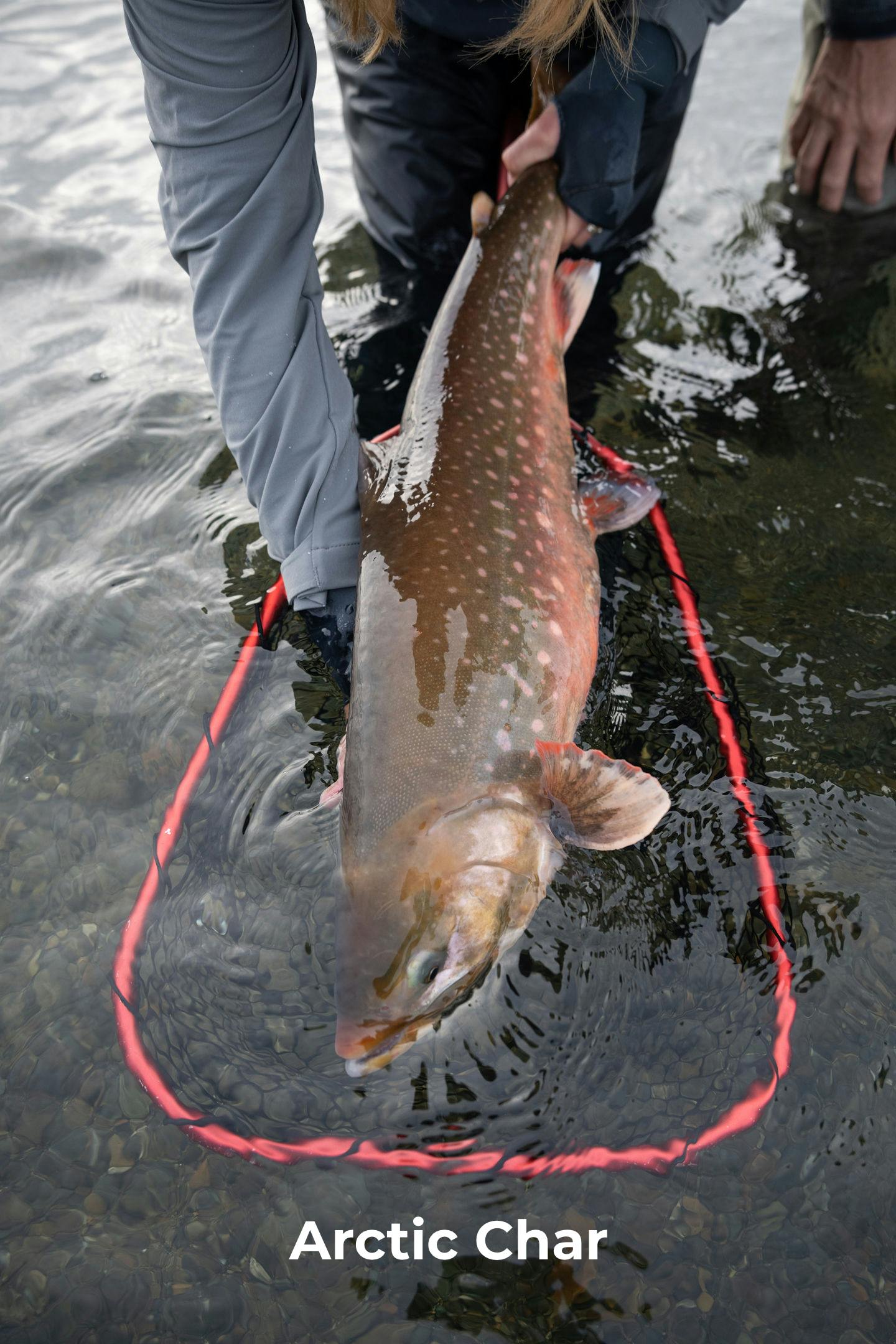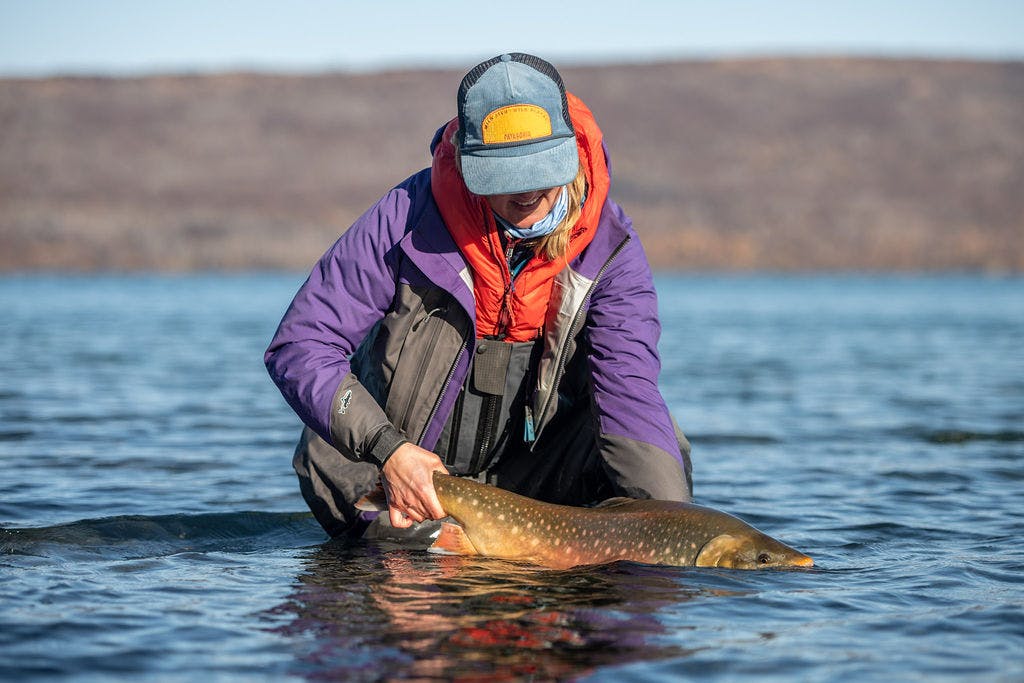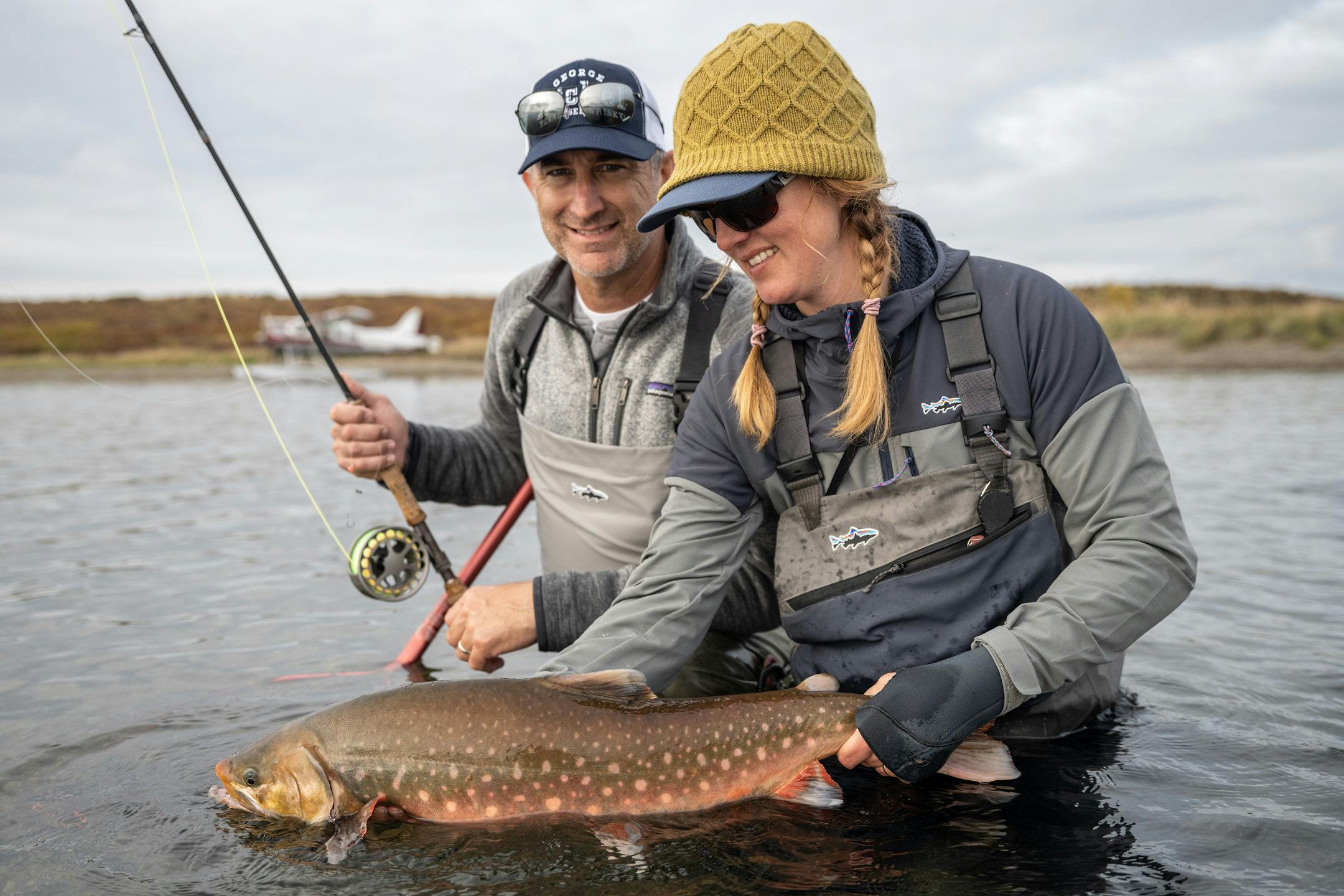The Ultimate Guide to Char Fishing in Bristol Bay
Why Arctic Char Are a Top Catch
Arctic char are a prized catch for sport fishing enthusiasts in Bristol Bay. As close relatives of trout, these vibrant fish are renowned for their striking colors and exciting fights, especially in the fall when they display their stunning orange hues. Found in many of the Bristol Bay watersheds we explore, Arctic char come in a variety of sizes and shapes, making them a versatile and thrilling target for anglers.
Arctic Char vs. Dolly Varden: Key Differences
While Arctic char and Dolly Varden are closely related, they have distinct differences:
- Color and Appearance: Arctic char typically display a range of colors depending on their environment and the time of year. They are often brown to greenish-brown on their upper body with lighter undersides. In contrast, Dolly Varden can be either sea-run or lake-run. Sea-run Dolly Varden are generally smaller, though they can reach up to 28 inches. Lake-run Dolly Varden and Arctic char can grow quite large, with some lake-run Arctic char reaching up to 35 inches in the Becharof National Wildlife Refuge.
- Spotting Differences: Arctic char usually have fewer but larger spots compared to Dolly Varden. Their tail is more deeply forked, and they have a narrower caudal peduncle (the area before the tail fin). During spawning, Arctic char can exhibit colors such as gold, orange, yellow, or rose, and occasionally red. On the other hand, spawning Dolly Varden often display red or pink hues on their lower sections and have bright red spots. Male Arctic char also have a smaller kype (hooked lower jaw) compared to their Dolly Varden counterparts.

When to Fish for Arctic Char and Dolly Varden
Arctic char can be fished from the season opener all the way through to ice-over in many rivers and streams. These fish are known for their aggressive feeding behavior and can be caught using various methods, including skated dry flies. Both Arctic char and Dolly Varden exhibit beautiful colors, especially in late summer and fall. To access the prime fishing spots, we use float planes to reach remote watersheds, where you can often sight-fish in shallow waters. This active and adventurous aspect of our fishing program is a favorite among our guests.


Join Us for a Memorable Arctic Char Fishing Experience
Whether you're drawn to the vivid colors of Arctic char or the challenge of distinguishing them from Dolly Varden, Bristol Bay offers some of the best fishing opportunities for these remarkable fish. At The Lodge at 58 North, we provide a range of adventurous fishing options and expert guidance to ensure a rewarding experience.
Book your trip today and discover the excitement of Arctic char and Dolly Varden fishing in one of Alaska’s premier fishing destinations!

Ready for an unforgettable escape?
Explore our packages and start planning your journey to The Lodge at 58° North, where the magic of Alaska awaits.

Bristol Bay, Alaska
541 743 1255


